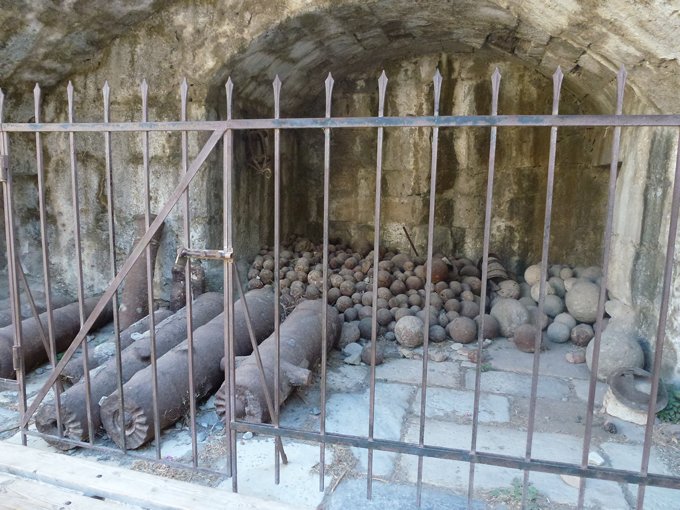Kos Town

Thursday 19th
September, 2013.
Frank and Sue flew home last night after a few holdups. When they arrived at the airport it had people queuing everywhere as they had 12 planes to get away in 2 hours in a very small airport. Frank phoned to say they were boarded 35 minutes early and everything looked good for takeoff on time. Apparently, there was ice on the wings!!!! Then they spent too long on the tarmac trying to deice that they needed to refuel. All day we had been sheltering from the sun and it was just amazing at 9.45 p.m. the plane had ice problems. They did arrive home safely just a little later than expected.
Jim and I washed and cleaned the boat and made three visits to the laundry which was luxury for me before visiting Kos town in the afternoon. Kos is the second largest of the Dodecanese islands and is famous for producing the kos lettuce. We looked hard but we could not find one being grown anywhere!
The Castle of the Knights was built by the Knights of St. John who ruled from 1315 until the Turks governed from 1522 to 1912. The Knights then left Kos and settled in Malta where they helped the people. Our St. John’s Ambulance has the Maltese cross in their flag in honour. Italian and German occupation followed until unification with Greece in 1948. Old Kos town was destroyed in the 1933 earthquake and revealed ancient ruins which the Italians excavated and restored. The castle gateway is carved with gargoyles and an earlier coat of arms of Fernandez de Heredia the Grand Master from 1376 to 1396. The castle overlooks the harbour which is full of boats and cafes and the odd cruise liner.
Hippocrates is known as the first holistic healer and father of modern medicine. Hippocrates was born on Kos in 460 BC and died in Thessaly in 375 BC. He supposedly came from a line of healing gods and he learned medicine from his father and grandfather. His father was a direct descendant of Asklepios, the god of healing and his mother of Herakles. He was the first physician to classify diseases and introduce new methods of diagnosis and treatment. He taught on Kos before the Asklepieion was established. Asklepieion is 2 miles outside of town and its white marble terraces were cut into the hill in the 4th century BC for rest and recuperation. The views from the site are breath taking. There was a temple, school and medical centre all built after Hippocrates death. The doctors and priests of Asklepiados all became practitioners of Hippocrates methods. Hippocrates wrote the Hippocratic Oath to cure rather than harm still sworn by medical practitioners worldwide. The medical school used the snake as its symbol and it is the emblem of modern medicine.
Hippocrates’ ancient plane tree sits in the Plateia Platanou at Asklepieion and is said to have been planted by him 2,400 years ago. The present day tree which sits across the road from the castle is 46 feet in diameter and is only about 560 years old and is reported to be a descendent of the original tree. Just by the tree is the fountain which was built in 1792 by the Turkish governor Hadji Hassan to serve the Mosque of Loggia which has now fallen into disrepair. The water is said to have gushed into an ancient marble sarcophagus. Jim couldn’t resist a drink from the fountain.
There were lots of holiday makers wandering around the town but with all the restaurants and bars to choose from no one would be disappointed. As we wandered back along the promenade to the marina we enjoyed the afternoon sun.






